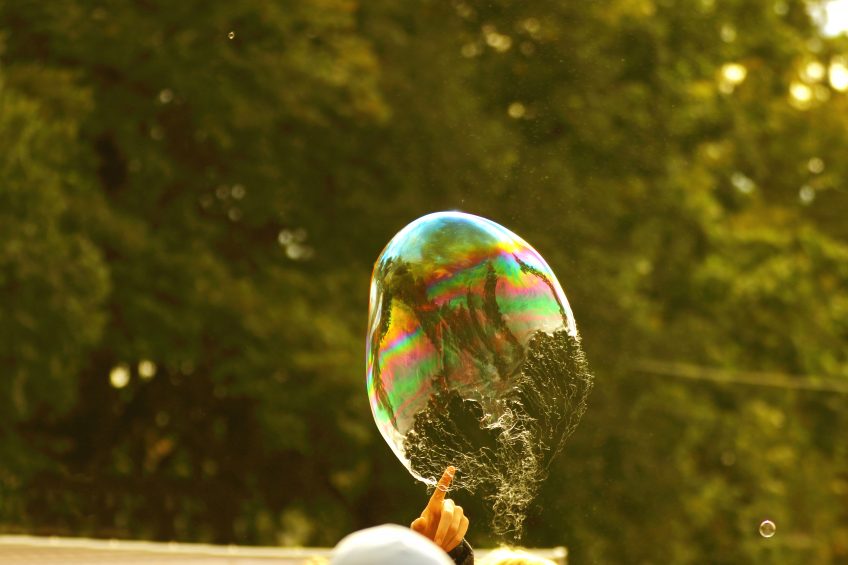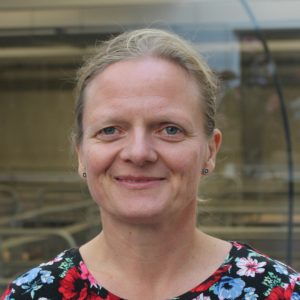Pig bubbles in Denmark – and how to burst them

A few weeks ago we introduced the ‘bubbles’ in an attempt to analyse the huge perception difference of livestock production by city people and farmers. Welfare expert Vivi Aarestrup Moustsen acknowledges the bubbles in Denmark too – and offers advice on how to burst them.
There are many bubbles in Denmark. The industry is one bubble and animal welfare organisations is another bubble. To burst the bubbles we should remember that if we can find a common ground for working together, the chances of winning is much greater – and we’ll improve the welfare for more animals.
Solutions for pig welfare issues
The Danish pig producers – and pig producers in many other countries – strive to find solutions for welfare issues like tail biting, castration and loose housing. Farmers care for the nature and the animals. Why else should they choose to work long hours for, very often, low pay if they didn’t. And yet, others characterise farmers, as people only interested in money and with no concern regarding animal welfare.
It probably comes back to the bubbles described by Pig Progress editor Vincent ter Beek a few weeks ago. Farmers and non-governmental organisations (NGOs) are not in the same bubble and don’t see the same picture.
The industry bubble
A few examples from the pig producers bubble: Farmers would prefer not carry out surgical interventions on their pigs. So why do they dock tails and castrate male pigs?
Tail biting is multifactorial and occurs also in enriched systems like the organic production. The farmers don’t know how to avoid tail biting but they do know that the risk of tail biting is significantly higher if the pigs are not tail docked and that the young piglets seem to overcome the impact of tail docking within a short period of time after being tail docked. So while research to point out solutions applicable on farms is being carried out, most pig producers will continue to dock tails.
Castration takes time, it increases risk of infections – just to mention a few of the drawbacks of castration. However, a lot of markets do not want to buy our pigs, if there is a risk of boar taint – and no market, no production. So what do farmers do? They castrate and support research in methods to avoid castration.
What about loose housing of lactating sows? Why continue to keep sows in crates? Because even though scientists across many countries have worked hard to develop farrowing pens for loose sows, the number of competitive robust pen designs which at the same time is approved of by the major animal welfare organisations is negligible.
No robust competitive systems
So looking from the industry’s bubble, we want to improve welfare, we are working hard to do so, but we don’t have robust competitive systems to avoid tail docking, castration and crating of sows – yet.
The animal welfare societies’ bubble
Yet from a number of animal welfare organisations’ bubble, the industry is not working hard enough and is far from making sufficient improvements.
There are campaigns on Twitter and Facebook regarding end pig pain, etc. And that farmers are accused for breaking the law when they dock tails, and for keeping pigs under unacceptable conditions.
Can we burst the bubbles?
To improve animal welfare – not only for a few animals but for the large scale production – the key drivers are:
• Market-driven;
• Science-based;
• Multi-stakeholder approach.
We live and produce food to a global world– when we want to improve welfare for many animals – there need to be an increased demand for the welfare products.
Animal welfare is high on the agenda
A new survey showed that in Denmark, increasing numbers of consumers take animal welfare into account. It is as high as 70% of the Danes doing so regularly or frequently. The majority, however, are only willing to pay a limited premium for the products.
So we can choose either to set the animal welfare standards very high, however, that’s more than likely to increase cost of production significantly, leading to a need for a very high premium, which only few consumers are willing to pay – leading to limited demand for the product – leading to limited number of animals benefiting from the improvements.
Or we can choose to be less ambitious – and yet improve the welfare for our livestock animals, so the extra costs are less, the required premium less, then number of consumers willing to pay increase and the demand increase, so more animals benefit.
Changes must be based on scientific facts
But it’s very important – and very closely related to the two other key drivers – science and multi-stakeholder approach – that the changes we implement must be based on scientific facts and not feelings.
We need to understand the behaviour of the animals to improve the housing conditions and management and thereby the welfare of the animals. To do so, applied ethology is a prerequisite where we in close collaboration between universities and industry can make significant and robust improvements for our livestock industry.
New Danish national animal welfare brand
The new Danish national animal welfare brand is a great example. There has been a desire to improve animal welfare, there has been research to investigate and document impact of changes – and there has been mutual commitment from the government, the farmers, the veterinarians, the retailers, the abattoirs –and from one of our large animal welfare organisations.
One way of bursting bubbles is acknowledging that when we join forces, the chance of winning is greater. The world’s population is increasing and we all need food. We are able to produce it more and more efficient – and yet, maintain and improve the animal welfare.











